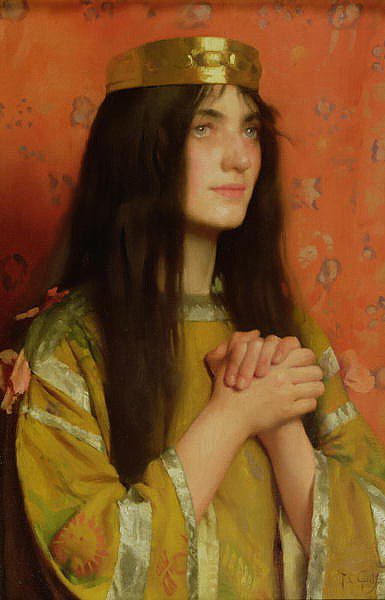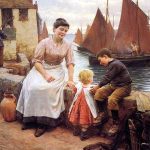
In Newlyn, he founded the Newlyn Industrial Classes, where the local youth could learn arts & crafts. He also helped to set up the Newlyn Art Gallery and served on its committee all his life. Among his friends in Newlyn was fellow artist Stanhope Forbes and Albert Chevallier Tayler.
In Newlyn, like other art colony artists, he used the plein-air approach for making paintings outdoors. He was also inspired by James McNeill Whistler‘s techniques for creating compositions and paintings.
Shift in Direction
His style changed following 1891-1892 a visit to Paris and Florence; His works were transformed from the Newlyn “rural realistic” style to a Pre-Raphaelite style that embraced more vibrant, exuberant colors and “returned to allegorical genre painting”.
Thomas Gotch was a recognized success during his lifetime and enjoyed considerable public acclaim. He was a regular exhibitor at London’s Royal Academy and contributed to numerous other national and international exhibitions. His works are still regularly exhibited and are often the subject of academic studies.
Over his artistic career, Gotch was also a model for other artists. For instance, he modeled illustrations of King Arthur’s Wood for Elizabeth Forbes. Source: Wikipedia.




